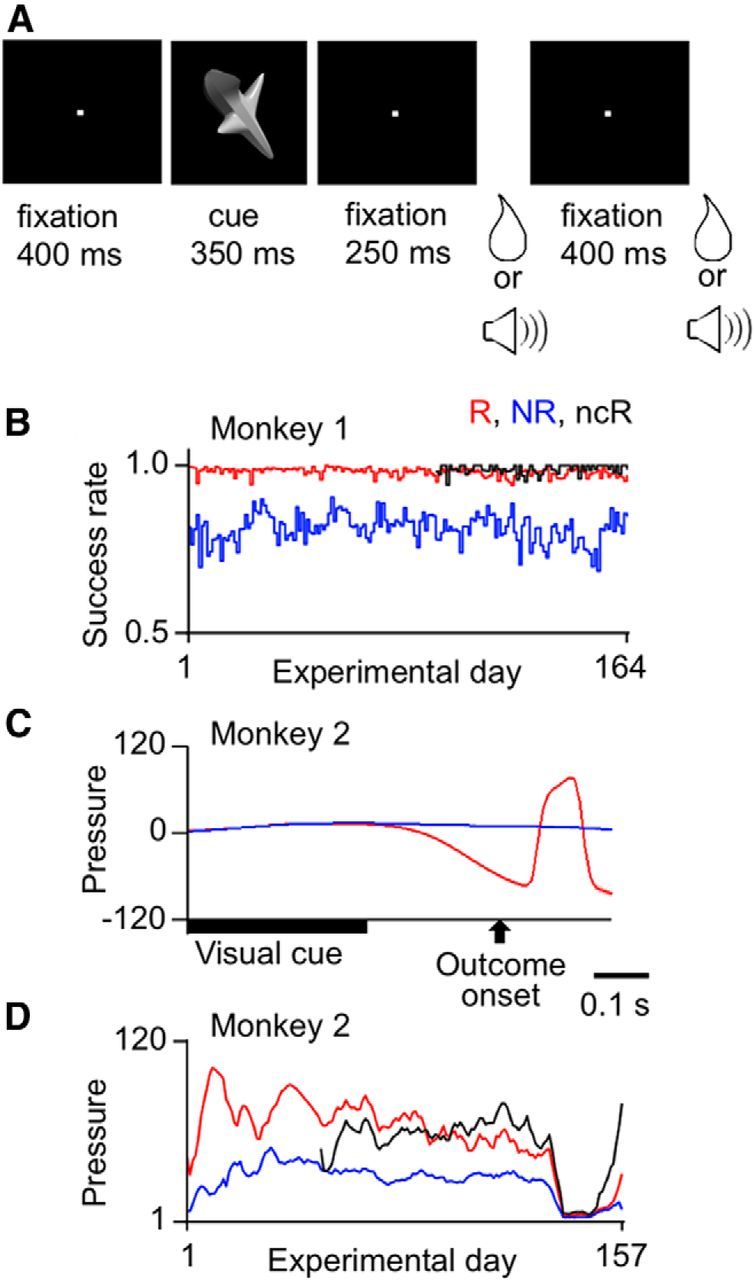Figure 3.

Trial structure and behavioral results for the experiments with fixed cue-outcome contingency. A, Events in a trial. There was one sequence of visual-cue presentation and outcome delivery in each trial. Depending on the cue, a water reward or a clicking sound was provided. The same outcome was repeated twice in each trial. Monkeys were only required to maintain lever-pressing and eye-fixation throughout the trial. B, Daily calculated success rate of Monkey 1 plotted against the experimental day. B–D, Red and blue lines indicate values in rewarded (R) and unrewarded trials (NR), respectively. Black lines indicate values in no-cue rewarded trials (ncR). The success rate was calculated by 1 − break rate, where the break rate was the proportion of trials in which the monkey broke the lever-pressing or eye-fixation during a period from the cue onset to the first outcome onset. C, The pressure within the tube for water reward delivery in Monkey 2. The negative deflection near the first outcome onset in rewarded trials represented the monkey's anticipatory sucking, and the positive deflection that followed reflected the arrival of the water drop to the monkey end of the tube. D, Daily calculated mean strength of anticipatory sucking in Monkey 2, measured over a 150 ms window starting 100 ms before the electrical onset of the first outcome, plotted against the experimental day.
